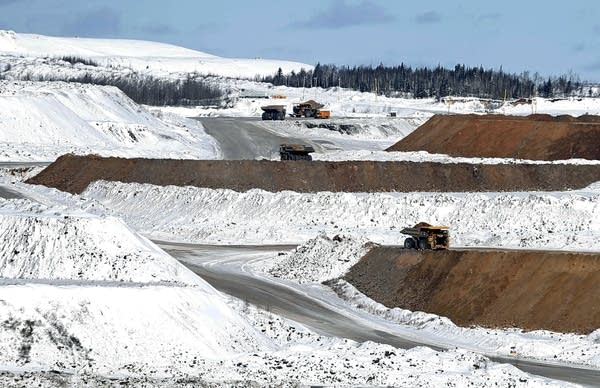Three questions facing MN in wake of steel, aluminum tariffs

Go Deeper.
Create an account or log in to save stories.
Like this?
Thanks for liking this story! We have added it to a list of your favorite stories.
The Trump administration announced steel and aluminum tariffs on Thursday.
Although a 25 percent tax on imported steel wouldn't apply directly to Minnesota's iron mining industry, the trade barriers are likely to have a significant impact on Minnesota's economy — for good and bad.
1) Are these tariffs good news for Minnesota's Iron Range?
Turn Up Your Support
MPR News helps you turn down the noise and build shared understanding. Turn up your support for this public resource and keep trusted journalism accessible to all.
Potentially, yes. While it isn't what it was decades ago, iron mining is a $3 billion industry in Minnesota, according to the Duluth-based Iron Mining Association. It says mines employ 4,200 people in the state, and support 13,000 other jobs among suppliers.
The mining association claims steel dumping from China helped close half the state's mines in 2015.
"(China) developed those industries when they were expanding for their own domestic consumption," said Tony Barrett, an economist at the College of St. Scholastica in Duluth. "As they don't need as much steel as they can make, they export it. Since they're a Communist country and these are not for-profit corporations, they are able to sell their steel at a loss, just to stay open. That's not economics."
Tariffs would effectively raise the price of imported steel, make domestic steel more competitive and bolster domestic industry. President Trump said Thursday that without that steel and aluminum industry, "You almost don't have a country."
2) What's the downside?
Everything that's made with steel will get more expensive: cars, commercial buildings, canned food and drinks, just to name a few.
Some economists say those rising prices will add to the inflationary pressure that could slow growth in the U.S. economy.
But what's worrying many folks in Minnesota is another big industry: export agriculture.
Minnesota is the fourth largest agricultural exporting state in the country, sending soybeans, corn, pork and wheat all over the world — almost half to Asia.
It's a more than $7 billion business and China is Minnesota's biggest export market. Perry Aasness, the head of the the Agrigrowth Council, the state's biggest agricultural trade group, said he's worried that China might respond in kind.
"We're very concerned about any ramifications of what might come of this, and how it might blow back on agriculture, particularly when we're at a situation right now with tough commodity prices anyway," Aasness said.
3) How likely is it that will happen?
No one knows. The U.S. has imposed tariffs before on a certain type of steel from China, India, Italy, Korea and Taiwan in 2016. The state's mining association credits those tariffs with helping revive Minnesota production, but those were relatively narrow trade restrictions.
Economists say these latest tariffs could be historically broad and steep, unlike most seen over the last several decades.
Some think they're not even possible, because of the potential for retaliation.
"You're already getting instant response from several leaders around the world. I think that will intensify here over the next few days," said Jim Paulsen, chief investment strategist at the Leuthold Group in Minneapolis. "I would personally be somewhat surprised if we see tariffs of anywhere close to the amounts he suggested go into effect."
The president said they're working out the details and could have a final plan for tariffs next week.
Kelsey Johnson, president of the Iron Mining Association of Minnesota, and College of St. Scholastica economics professor Tony Barrett joined MPR News Host Mike Mulcahy to talk about how tariffs would affect ore producers and related business around the region and what they could mean for U.S. relations with Canada and Europe.
'>



